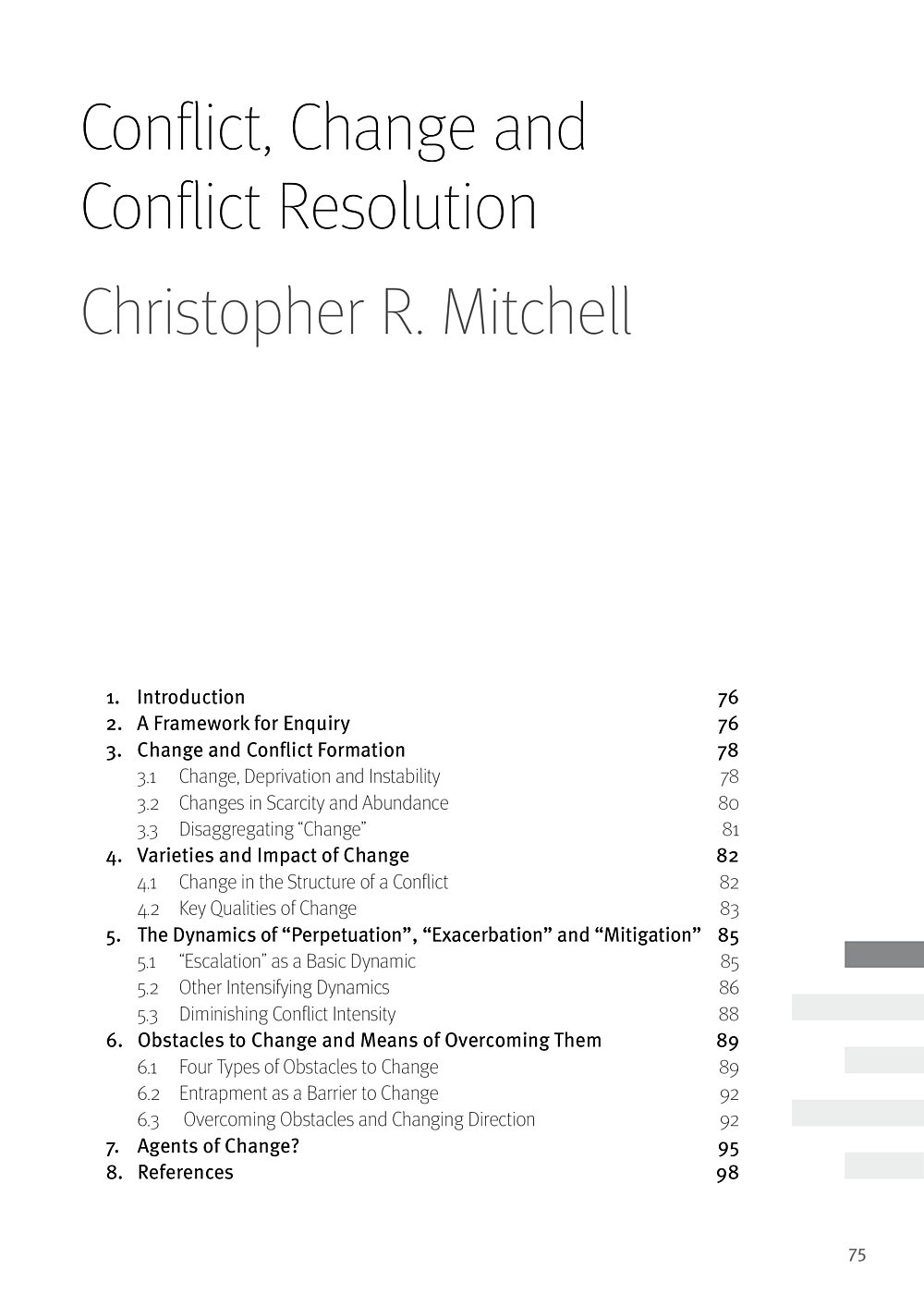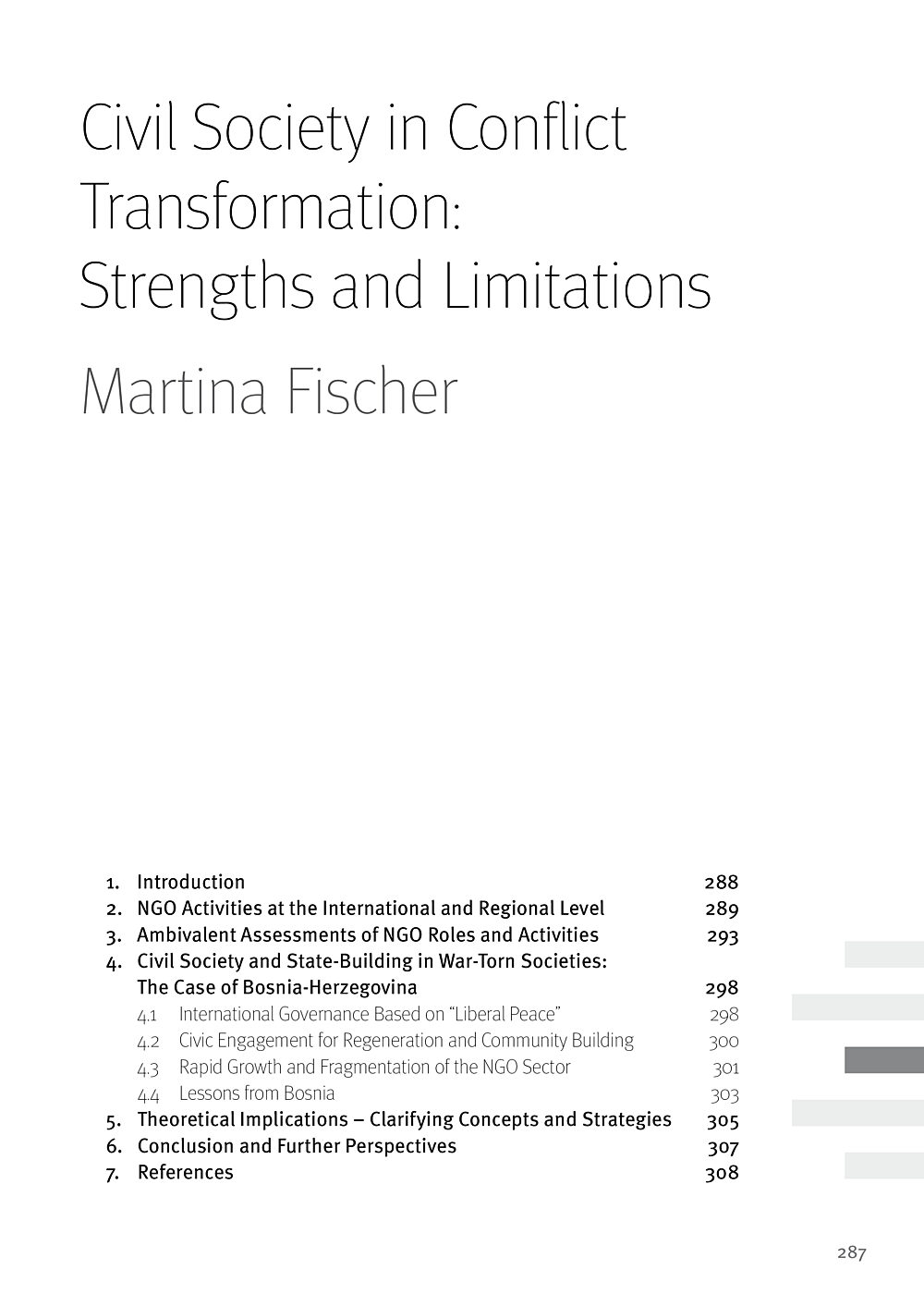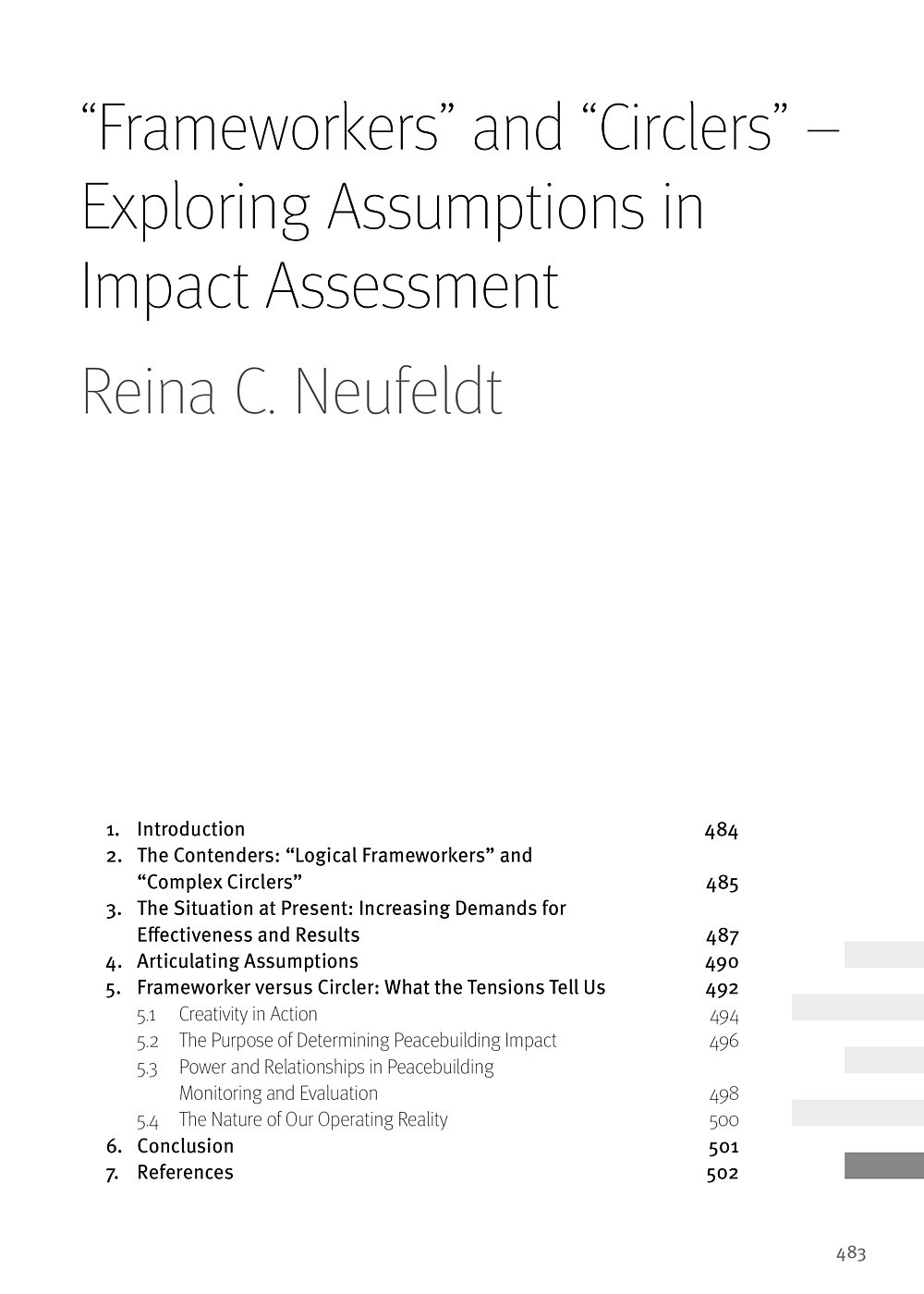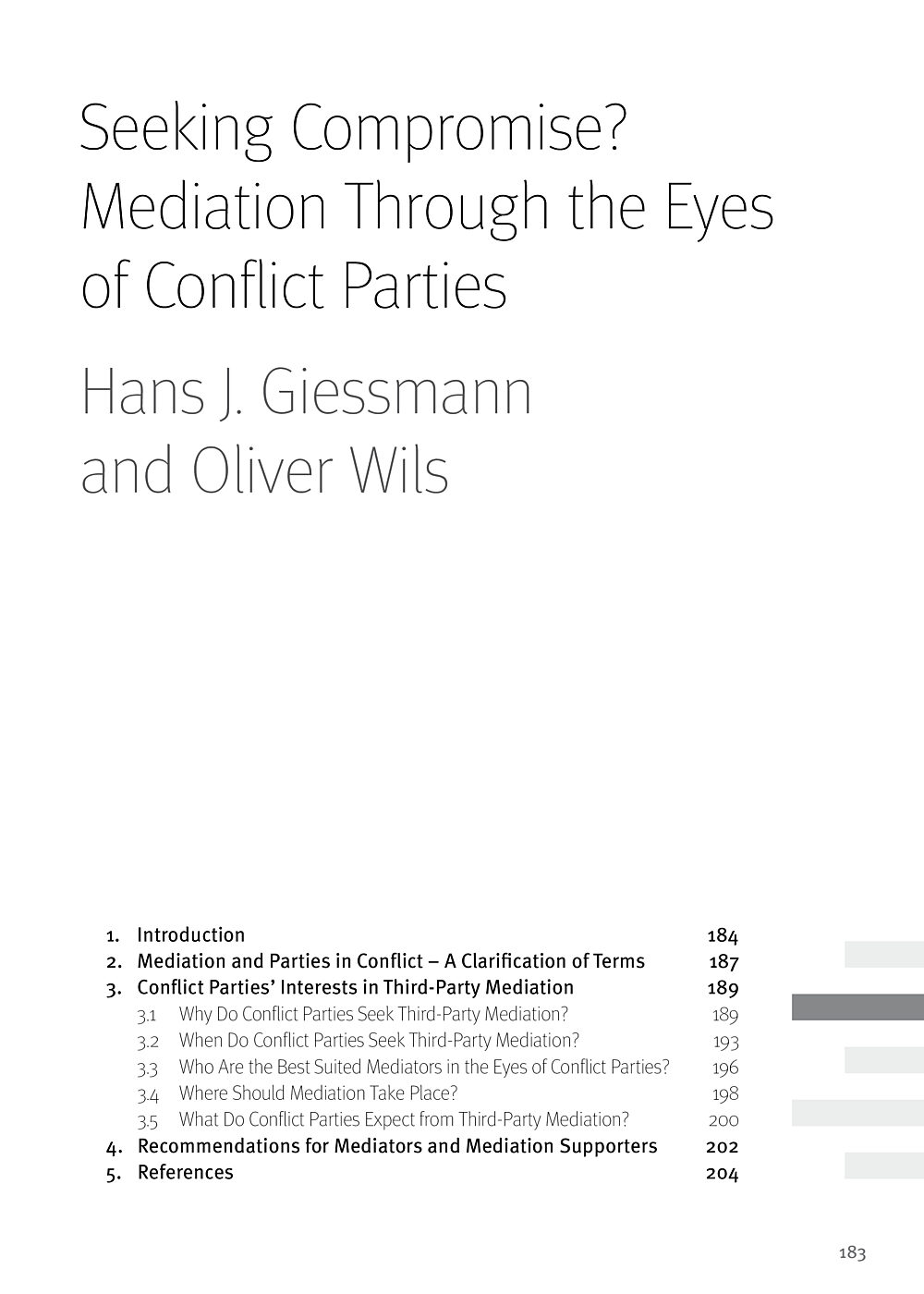Our Library
Explore our publications, from research papers and series to educational materials, covering all aspects of conflict transformation and peace promotion.

Conflict, Change and Conflict ResolutionHandbook Article
- Year2011
- Author(s)Christopher R. Mitchell

Civil Society and Conflict Transformation: Strength and LimitationsHandbook Article
Focuses on the potential contribution that civil society actors can make to peacebuilding. Central questions are: what types of activities do NGOs undertake? What problems and dilemmas are faced in the development of civil society in war-torn societies? Taking the example of Bosnia-Herzegovina, what are the limitations of civil society's contributions, and how does civil society relate to state-building? And, finally, how do these considerations impact on theoretical conceptualisations of the term "civil society"? (updated and revised for the 2011 print edition)
- Year2011
- Author(s)Martina Fischer

Potential and Limits of Traditional Approaches in PeacebuildingHandbook Article
- Year2011
- Author(s)Volker Boege

A Systemic Approach: Reflections on Sri LankaHandbook Article
Demonstrates the potential of systemic conflict transformation tools as applied to the civil war and peace process in Sri Lanka, based on dialogue and capacity building work carried out from 2001-2008. Taking on board the complexity, dynamism and non-linear development paths of protracted conflict systems, the author offers some insightful ways to help mobilise the “internal resources” inherent to a system as a means of solving problems and to re-conceptualise peace as a learning process. (updated for 2011 print edition)
- Year2011
- Author(s)Norbert Ropers

Evaluating Peacebuilding: Not Yet All It Could BeHandbook Article
- Year2011
- Author(s)Cheyanne Scharbatke-Church

"Frameworkers" and "Circlers" – Exploring Assumptions in Impact AssessmentHandbook Article
Unpacks some of the hidden hypotheses underlying current assessment methodologies. The author argues that two (ideal type) constituencies interact – and sometimes clash – in development and peacebuilding work. She sets out to clarify their contending perspectives and illustrates ways in which both approaches can enrich each other and further the ultimate task of achieving effective impact monitoring and evaluation. (updated and revised for 2011 print edition)
- Year2011
- Author(s)Reina C. Neufeldt

A More Violent World? Global Trends in Organised ViolenceHandbook Article
Presents robust quantitative data challenging the widespread notion that worldwide trends in violent conflict are increasing. This reflects changes in the nature of warfare, but also points to some possible successful outcomes of recent peacebuilding work. The analysis, conducted as part of the Human Security Report Project, extends beyond state-based conflicts to also cover non-state actors involved in conflict and assaults that target civilians.
- Year2011
- Author(s)Tara Cooper, Sebastian Merz, Mila Shah

Seeking Compromise? Mediation through the Eyes of Conflict PartiesHandbook Article
- Year2011
- Author(s)Hans-Joachim Giessmann, Oliver Wils

Preparing for Nonviolence – Experiences in the Western BalkansHandbook Article
- Year2011
- Author(s)Nenad Vukosavljevic

Training for Conflict Transformation – An Overview of ApproachesHandbook Article
Seeks to provide a first orientation for an audience less familiar with the field of conflict transformation and its educational possibilities. Questions raised include: who is offering training for which target audience? What are strengths and shortcomings? Are there criteria that help assess training? What challenges remain, what recommendations can be made for improving training offers? The article has an extensive reference section covering training manuals and materials, organisations, resources and analyses. (updated and revised for 2011 print edition)
- Year2011
- Author(s)Beatrix Austin